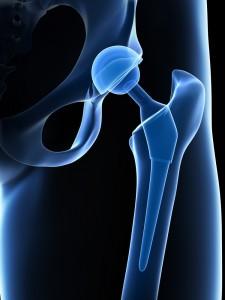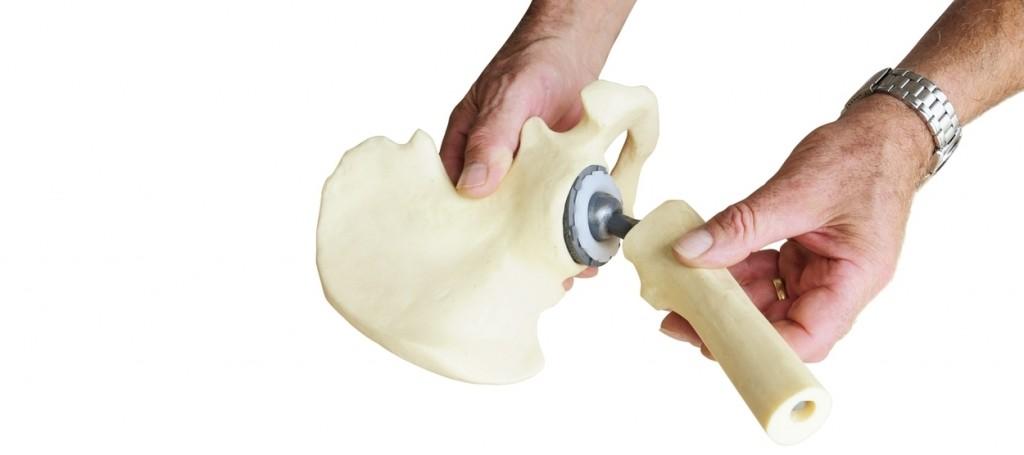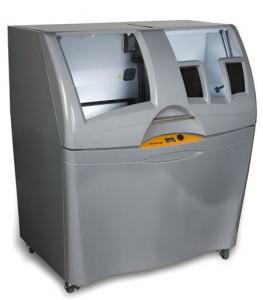 Every year, around a million people worldwide undergo a hip replacement operation and most patients experience significant relief from pain and improved quality of life from the procedure.
Every year, around a million people worldwide undergo a hip replacement operation and most patients experience significant relief from pain and improved quality of life from the procedure.
Half of all these surgeries take place in the US and — despite the country’s modern health care system — in around 8 percent of cases the initial surgery fails, often because of an infection. Patients then have to undergo surgery to remove and replace the implant, but that tends to have a much lower chance of a successful outcome.
Now, an experimental technology that combines 3D printing with state-of-the-art tissue engineering promises to improve the success rate of these secondary surgeries, and keep patients on their feet. Once a synthetic hip fails, the patient undergoes a “revision” surgery which involves the complete removal of the ball-and-socket prosthesis and another procedure, known as an osteotomy, to remove the infected bone.
The removal of that bone is what reduces the chances of a second implant working out, so a few years ago doctors started implanting a temporary ‘spacer’ — made of bone cement laced with antibiotics — to resolve infections without needing to remove so much bone tissue. Patients are able to move about with the aid of a walker or wheelchair while the spacer does its work and eradicates the infection.

Researchers in China and the US have taken the spacer technology to the next level by 3D printing it to fit the patient perfectly using a ‘bioceramic’ sheath made from hydroxyapatite and calcium phosphate, a material already being used to make 3D printed artificial bone in Japan that can be used for grafts, around a bone cement pillar.
In addition, the team from Third Military Medical University in Chongqing, China, and Brigham and Women’s Hospital in Boston are impregnating the calcium phosphate spacer with not only antibiotics to fight infection but also biologically-active compounds that encourage the regrowth of bone.
The approach has only been made possible by the rapid development of 3D printing technology, including the ability to print materials at low temperatures that preserve the activity of sensitive, bioactive substances, say the scientists, who have reported their work in the Journal of Medical Hypotheses and Ideas.
 The team made a prototype at room temperature using a commercial ZPrinter 450 manufactured by ZCorp (owned by 3D Systems since 2012) and subjected the idea to a battery of laboratory tests before trying it out in an animal model.
The team made a prototype at room temperature using a commercial ZPrinter 450 manufactured by ZCorp (owned by 3D Systems since 2012) and subjected the idea to a battery of laboratory tests before trying it out in an animal model.
“It is highly achievable to fabricate a 3D printable and patient-customized articular spacer,” write the researchers. “Delivery of specific drugs and molecules can imbue it with extra properties, which would significantly reduce the healthcare cost [and] the prosthetic failure,” they add.
The scientists say they now intend to carry out additional biomechanical and biophysicochemical tests in order to optimize design of the spacer. In particular, they would like to tweak the thickness and porosity of the bioceramic sheath, look at different compositions to improve its biocompatibility with human tissues, and how well it can release its payload of drugs and bone-stimulating proteins.
Let us know your thoughts about this potential over in the 3D Printed Hip Spacer forum thread at 3DPB.com.
Subscribe to Our Email Newsletter
Stay up-to-date on all the latest news from the 3D printing industry and receive information and offers from third party vendors.
You May Also Like
3D Printing News Unpeeled: A $3000 SLS System, Construction Subsidies and Parameters
The Housing Affordability Crisis is one of Canadian President Trudeau’s biggest issues. Now the government has made subsidies available, including scaling new technologies, 3D printed housing and libraries of reapproved...
“Bundled Light” Enables High Quality Plastic 3D Printing from LEAM
Naturally, we expect current 3D printing methods to continuously improve, but it continues to do so in the most surprising ways. The latest development comes from LEAM, a startup spun...
Each to Their Own: Exploring Creality’s Latest Ender Trio as the Company Strengthens Its Commitment to 3D Printing Advocacy
Creality has reaffirmed its commitment to promoting 3D printing. The launch of the Ender-3 V3 SE, Ender-3 V3 KE, and Ender-3 V3 showcases the company’s dedication to catering to diverse...
3D Printing News Briefs, March 23, 2024: AM in the US Coast Guard, Navy, & More
In today’s 3D Printing News Briefs, we’re discussing the use of 3D printing in various branches of the military, including the U.S. Coast Guard, the U.S. Navy, and the German...































